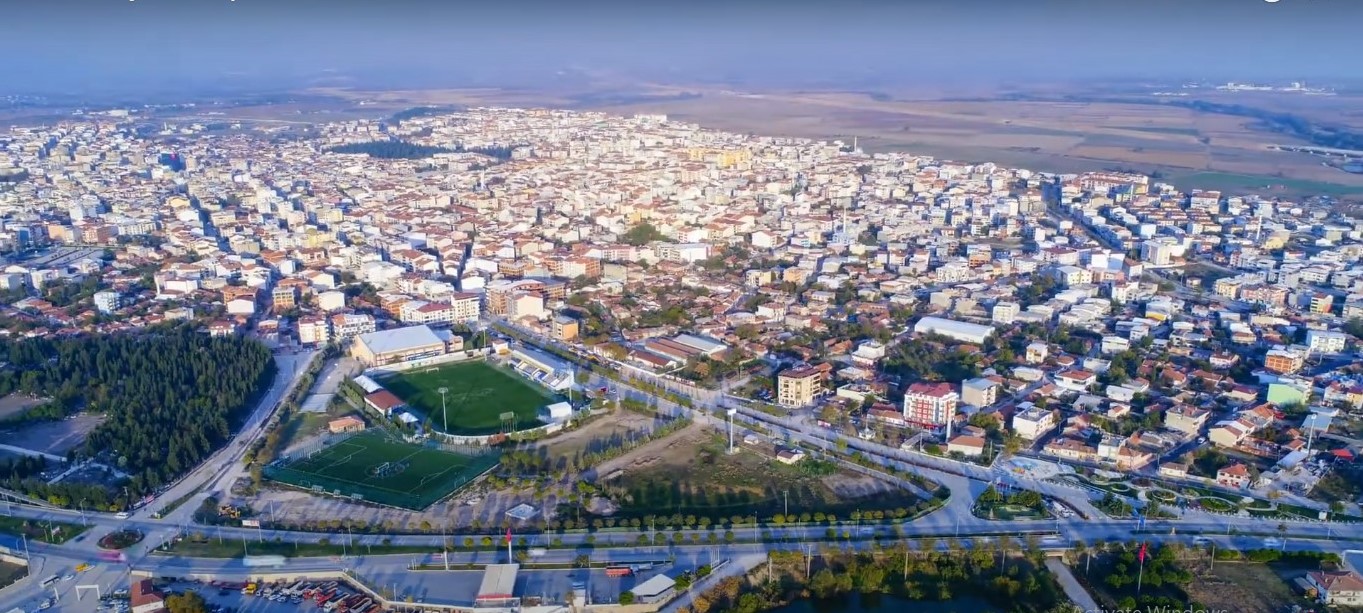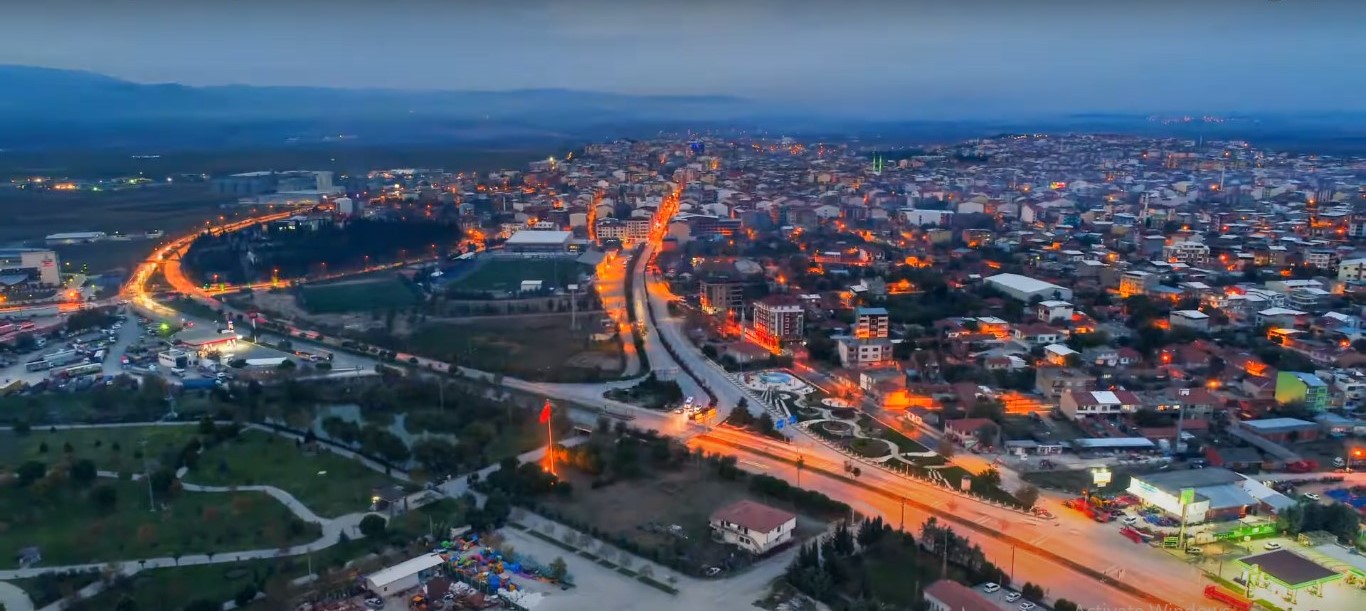
Located in the south of the Marmara region, Karacabey is 25 km. north of the 40th north parallel and 20 km. east of the 28th east meridian. The surface area of the district is 1.247 square kilometers. Karacabey is a district of Bursa province in the southern Marmara part of the Marmara Region. It is surrounded by Mudanya and Bursa from the east, Mustafakemalpaşa and Susurluk from the south, Manyas from the southwest, Bandirma from the west and the Marmara Sea from the north. Its location at the crossroads of Bursa – Çanakkale, Bursa – Balikesir and Izmir highways increases the importance of the district.
It is known that the settlement in the region dates back to the Misis who migrated to the region in the XIIth century BC and that there was a city called Miletepolis within the borders of Karacabey at that time. The first settlers in Karacabey and its environs were the Ethiopians, who are claimed to have come from Central Asia about 4000 years ago. After the Ethiopians, Karacabey lived through the periods of Mycenaeans, Phrygians, Lydians, Persians, Alexander the Great, Pergamon Kingdom and Romans respectively. According to this information, Karacabey was called Mihaliç at that time.
Seeing that the Ottomans took Lipodium (Uluabat) Castle in 1336, Kalemastarya (Kirmastı-M. K. Pasha) and Mihaliç (Karacabey) Tekfurs came with gifts and declared their loyalty to Orhan Gazi and thus Karacabey joined the borders of the Ottoman Principality. After 6 centuries of Ottoman sovereignty, Karacabey was occupied by the Greeks on July 6, 1920 after World War I and was liberated from occupation on September 14, 1922 when our army entered the city.
The main historical monuments of the city are the Great Mosque built by Sultan Murat I, the Karacabey Mosque (Imaret Mosque) built by Karaca Bey in 1457, and the Issız Han, an Ottoman period building on the Karacabey-Bursa road and on the shore of Uluabat.
Karacabey plain: It was formed during the collapses that occurred in the IVth geologic period. Lakes were settled in the depressions in the east and west where this depression trough was deeper. These lakes are Uluabat in the east and Manyas (Bird Lake) in the west. The area where the city of Karacabey is located is an old landfill. The average elevation (altitude) is 24 meters. When we look at the coastal shapes; we see that Karadağ rises right from the sea, forming cliffy coasts and especially between Malkara and Kurşunlu there are small crescent-shaped bays. To the east of Yeniköy, where the Kocadere River flows into the sea, there is a small delta plain formed by alluvium. There are two “Lagoon” lakes on both sides of the river on this delta plain. The names of these lakes are Arap Farm Lake and Dalyan Lake.
Montenegro: The highest point is Sarnıç Tepe with 764 meters. The Karadağ mass is separated from the Mudanya hills by a strait cut by the Susurluk River. Mudanya hills or ridges generally have slightly rugged plains with plateau characteristics. They generally rise from the coast.
Karacabey Plain It is separated from Bursa Plain by Görükle ridges. It is separated from the Mustafakemalpaşa Plain by the Hara ridges, which have a very slight elevation. But in general, Mustafakemalpaşa Plain is like a continuation of Karacabey Plain. In the west, it merges with the Susurluk and Manyas plains.
Susurluk: It originates from the Şaphane Mountains under the name of Simav Stream. It enters and exits Lake Simav. When it descends to the Susurluk plain, its name becomes Susurluk River. After crossing the Karacabey plain, it receives Nilüfer Stream from the east and Karadere from the west. Its name becomes Kocadere when it passes through its own strait. It forms a delta plain and flows into the Marmara Sea. Its length is 321 km.
Nilüfer: It is fed by many streams descending from Uludağ. Near the village of Missi, the Doğancı Dam, which meets the drinking water of Bursa, was built on it. After crossing the Bursa plain, it turns west. It merges into the Susurluk River parallel to the Mudanya hills.
Karadere It also originates from an area close to the Şaphane Mountains. It enters and exits Lake Manyas. It flows meandering through the Karacabey plain. It merges into the Susurluk River near Çalı neighborhood. Its length is 160 km. Kemal paşa stream and Orhaneli stream flow into Uluabat Lake. One foot of Uluabat Lake flows into the Susurluk River under the name Uluabat Stream.

Uluabat (Apolyont) Lake: Its surface area is 134 square kilometers and its depth does not exceed 1-2 meters in most parts. Its length is 25 km. and its width is 14 km. Uluabat Lake is getting shallower from the periphery to the center day by day. The water color is dirty white. The bottom has a muddy structure. It becomes more turbid especially in windy weather. The northwestern shores have a reed structure. The water is sweet. Until recently, it was a lake with dense crayfish. Due to overfishing and pollution of the lake, the crayfish have become extinct and the fish species have decreased and are about to be extinct. The waters recede in summer. The area of the lake shrinks. The places where the waters recede are used as agricultural land. In recent years, Keşlik, Dağkadı, Bayramdere and İnkaya Ponds have been built due to the need for water in agriculture.
The climate of Karacabey is a transition from the Mediterranean climate to the Black Sea climate, albeit to a lesser extent. Summers are not as dry and hot as the Mediterranean. Winters are mild and rainy. Winter temperatures are lower than the Mediterranean. Summers are generally dry in our region. This drought often extends into the fall. In the years when the fall precipitation is delayed, there is a great pessimism in agriculture. The winter season in our region has a mild structure. Precipitation is mostly in the form of rain. According to 5-year observations, the average annual temperature is 14 C °, the highest temperature is 38.5 C ° in August, the lowest temperature is. It is understood from the meteorological data that the lowest temperature is – 9,7 C in February. Karacabey’s annual rainfall is 562 mm on average according to 29 years of observations.
Although the vegetation covering the lands of Karacabey gives the general characteristics of the Marmara Region, the areas close to the sea and the rural areas show differences. In the northern part of the district near the sea, Mediterranean plants and moisture-loving forests that endure mild winters have grown. Oak is frequently and abundantly found in our forests. The local land is also very suitable for growing olives. It is also observed that citrus type plants grow in places close to the sea. In addition, there are also grove forest areas that withstand the harsh winters in Karadağ in high places. There are plenty of linden and beech in these areas. Bikri species such as davulga, laurel, broom bush, hickory, stone oak are frequently encountered in the region within the plant community adapted to the Mediterranean climate. In the rural elevations known as “Pistikoz slopes”, only the plant species called blackthorn is encountered.